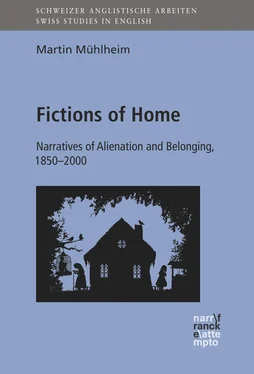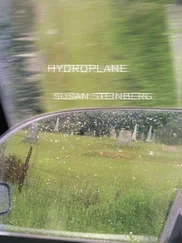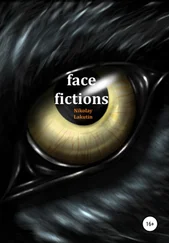1 ...8 9 10 12 13 14 ...44
Nature, Technology, and Communication
To the extent that the social system depicted in E.T. seems to have fostered alienationalienation from nature as well as alienationalienation between men, we may also relate the film to some of the theories proposed by Jean-Jacques RousseauRousseau, Jean-Jacques. Arguing against Thomas HobbesHobbes, Thomas, and echoing Michel de Montaignede Montaigne, Michel’s concept of the noble savage (Garrard 125), RousseauRousseau, Jean-Jacques can be seen as the first secularsecular theorist of alienationalienation. RousseauRousseau, Jean-Jacques suggested that man in the state of nature had been virtuous and innocent but had since become corrupted through the pressures of society towards conformityconformism and conformity and dissimulation. In the preface to A Discourse on Inequality , RousseauRousseau, Jean-Jacques calls the state of nature “a state which no longer exists, which perhaps never existed, and which will probably never exist” (68), thus admitting freely that the concept may merely be a theoretical fiction that does not necessarily refer to a particular historical reality.40 Moreover, as Andrew BiroBiro, Andrew contends, RousseauRousseau, Jean-Jacques did not advocate a return to nature in the naive sense of abandoning society altogether; rather, RousseauRousseau, Jean-Jacques “tried to articulate solutions to the problem of alienationalienation from nature” while at the same time conceiving of human beings “in a social (or postnatural) state” (Biro 60).41 For RousseauRousseau, Jean-Jacques, alienationalienation is thus a historically conditioned phenomenon that can, for that very reason, be overcome (or at least mitigated) through changechanges to the social structure.
And indeed, E.T. , too, does not dream naively of total regressionregression to some pristine state of nature, but instead develops a critique of society’s alienationalienation from nature precisely along Rousseauian lines . At the beginning of SpielbergSpielberg, Steven’s film, we encounter E.T. and his fellow aliens in the deep night of a Californian forest, peacefully engaged in collecting samples of plants. The aliens do not simply cut off these plants, but instead remove them together with their roots as well as some soil to ensure that they can continue to thrive. Subsequently, the film’s mise-en-scènemise-en-scène emphasizes the contrast between, on the one hand, the aliens’ quietly harmonious presence in the forest, and, on the other, the disruptive governmentgovernment agents, who arrive in droning cars with glaring lights and exhaust pipes spewing forth their toxic fumes. The contrast between these cars – metallic, angular contraptions – and the aliens’ soft-glowing, chubby spaceship could, indeed, scarcely be more pointed. At the same time, the scene makes clear that SpielbergSpielberg, Steven’s film is not hostile to technologytechnology as such. Rather, in showing that the ecologically sensitive aliens have mastered the technology of interplanetary space travel – an achievement that has so far eluded the technocratic humans – E.T. suggests that a more respectful kind of sciencescience (i.e. one not driven exclusively by the logic of exchange-valueexchange-value) would in the long run be both more productive and beneficent.
The idea, however, that the alien way of life could serve as a model for a better society no longer works if the aliens in E.T. are conceived as by nature fundamentally other than humans – and according to William AlexanderAlexander, William the construction of such an essential difference is precisely the ideological point of SpielbergSpielberg, Steven’s film. We have already examined Alexander’s suggestion that E.T., as a dark-skinned alien, must be interpreted in racialist terms. However, Alexander further contends that the film E.T. attempts to naturaliznaturalizatione racial difference, and that the scene in which Elliott saves the frogs from being anesthetized and dissected is crucial to this ideological project: “Elliott, E.T. in mind, releases his frog and urges the other pupils to release theirs, chanting ‘Back to the river and forest,’ a refrain the other childrenchildren pick up” (31). Both E.T. and the frogs, Alexander maintains, are thus portrayed as being “out of their native habitat”; they are, the implication is, depicted as naturally unfit for life in a white, suburbansuburbia environment, and must therefore “go back to where they came from” (31–33). For AlexanderAlexander, William, that is to say, E.T. superficially promotes tolerance and acceptance, but is ultimately an attempt at cementing exclusionexclusion. Accordingly, as the film progresses, E.T. becomes increasingly sick, which would only seem to confirm that there is indeed something in the earthly environment to which the alien is simply unable to adapt. At any rate, if Alexander’s claim that E.T. naturaliznaturalizationes difference is correct, then this would undermine the idea that the aliens could become role models for the humans, as it hardly makes sense to emulate those who are clearly unfit to cope with the natural conditions that apply on earth.
However, AlexanderAlexander, William’s argument in fact fails to do justice to SpielbergSpielberg, Steven’s film because it does not take into account the central role of communicationcommunication. Early on in the film, E.T. and Elliott are not really able to communicate with each other at all, and only gradually does the alien learn to use human language. Once he is able to make himself understood, however, E. T. is quick to point out to Elliott that he would like to re-establish contact with his fellow aliens: “E.T. phone home” (MathisonMathison, Melissa 100). Accordingly, we do not necessarily have to attribute the fact that E.T. becomes increasingly sick in the course of the film to his supposedly natural ‘unfitness.’ Instead, we may suggest that his illnessillness is the consequence of a crushing sense of isolationisolation: hostility from all sides in the host communitycommunity, and an utter lack of communicative ties with the home communitycommunity. Indeed, what supports this interpretation is the fact that E.T.’s resurrection towards the end of the film occurs at the precise moment when the other aliens, having picked up a signal of distress from a device that E.T. built especially to re-establish contact, are finally about to return to earth. E.T.’s illness thus does not serve to naturalize his absolute Otherness, but instead suggests that his sufferingsuffering arises from a lack of communal support, either from aliens or from humans (with the exception of a handful of childrenchildren, who are not in a position of power and on whom E.T. therefore cannot depend in the long run for protection).
Communicationcommunication – or the lack of it – thus prove vital to the notion of home as it is encapsulated in E.T. , and several critics have likewise noted that communicationcommunication in the form of language and cultural conventionsconventions is crucial to our sense of belonging.42 For instance, in his study Migration in World History , Patrick ManningManning, Patrick notes that those “who move from one communitycommunity to another must learn not only a new language, but also an accompanying set of customs” (4). Likewise, Agnes HellerHeller, Anges emphasizes the importance of cultural conventions for our sense of being at home:
A home is always a human habitat, a network of human bonds and ties, a communitycommunity of kind. At home, one talks without footnotes but one can talk without footnotes on the condition that one talks to someone who understands. And if one understands the other from a few words, allusionsallusion, and gestures, a common cognitivecognition and cognitive background is already presupposed. (10)
Читать дальше












